Ducati Panigale V2 vs Panigale V4: Comparison
The only reason to buy the Ducati Panigale V2 is that you can’t afford the Panigale V4. True or False? We hit the track (and the road) to find out. Living in the shadow of a superstar sibling can be really disconcerting.

Living in the shadow of a superstar sibling can be really disconcerting and demoralising. That’s because, instead of being recognised for your own achievements, you’re always seen as a cheaper alternative to the real deal. Don’t believe me? Well, look at the tirade of abuse Alex Marquez is subjected to virtually every day. No matter how successful he is, he’s always treated as the lesser Marquez. He’s never going to be as good as the original, or so the cynics will have you believe.
When the Ducati Panigale V2 made its global debut last year, I had the exact same thought – ‘Here comes the Alex Marquez version of the Panigale V4.’ And there’s a reason or two for that. You see, the Panigale V4, in my book, is the most exciting machine I’ve ever got my hands on. It’s an extraordinary piece of engineering, which absolutely boggles my mind. Let me put it another way – I find it so desirable that the idea of robbing a bank to buy one doesn’t necessarily seem ludicrous to me. It’s that evil, really! And I absolutely love it for its devilish charm and explosive personality.
The Panigale V2, on the other hand, doesn’t evoke the same sentiment. Mainly because it seems to be cashing in on the popularity of its big brother by borrowing its name, copying its style, and using the same tech. Much like the younger Marquez, if you will. Unlike the V4, there’s nothing remarkably unique about the V2, to be honest.
However, because it’s less powerful, the V2 does make the V4 look a bit excessive. But is that really the case? Well, to find out, we decided to pit the Panigale V2 against the Panigale V4 in a series of tests. We started the proceedings at a racetrack – which is where these bikes primarily belong – and this was followed by a test on public roads. So, what did we find? Which of the two is more impressive? Well, keep reading, and you’ll have your answer.

Lap Dance
For the track test, we found ourselves with both Panigales on the smooth tarmac of the BIC. To help us out with lap time, we called our friend and ace superbike racer, Simran King.
There was a problem though. You see, on a long and flowing track like the BIC, horsepower dictates the end result. On the two long straights, the V4 had a clear advantage over the V2. So, in order to level the playing field, we decided to use only the short-loop of the BIC – the same layout that we used for our annual mega-test. This section of the track is more technical and has fast switchbacks and some tricky braking spots. All of this makes it an ideal ground to gauge and assess a vehicle’s handling, agility, stability, and braking. Now, you may argue that it’s unfair to neglect the V4’s straight-line advantage, and that’s very true. But, in our defence, we’d like to remind you of an old adage – ‘Straights are for fast bikes, corners are for fast riders.’
Unashamedly saucy and unapologetically raw, the V4 is a quintessential Italian exotic – it gets you in a racy mood in no time
Since I was obviously biased in favour of the V4, it’s what I chose for the first session. As soon as you hop onto this thing, you realise what a beast it is. Unashamedly saucy and unapologetically raw, the V4 is a quintessential Italian exotic – it gets you in a racy mood in no time. The bars are low, pegs are rear-set and high, and the tank slides in between your legs like your favourite pair of boxers.
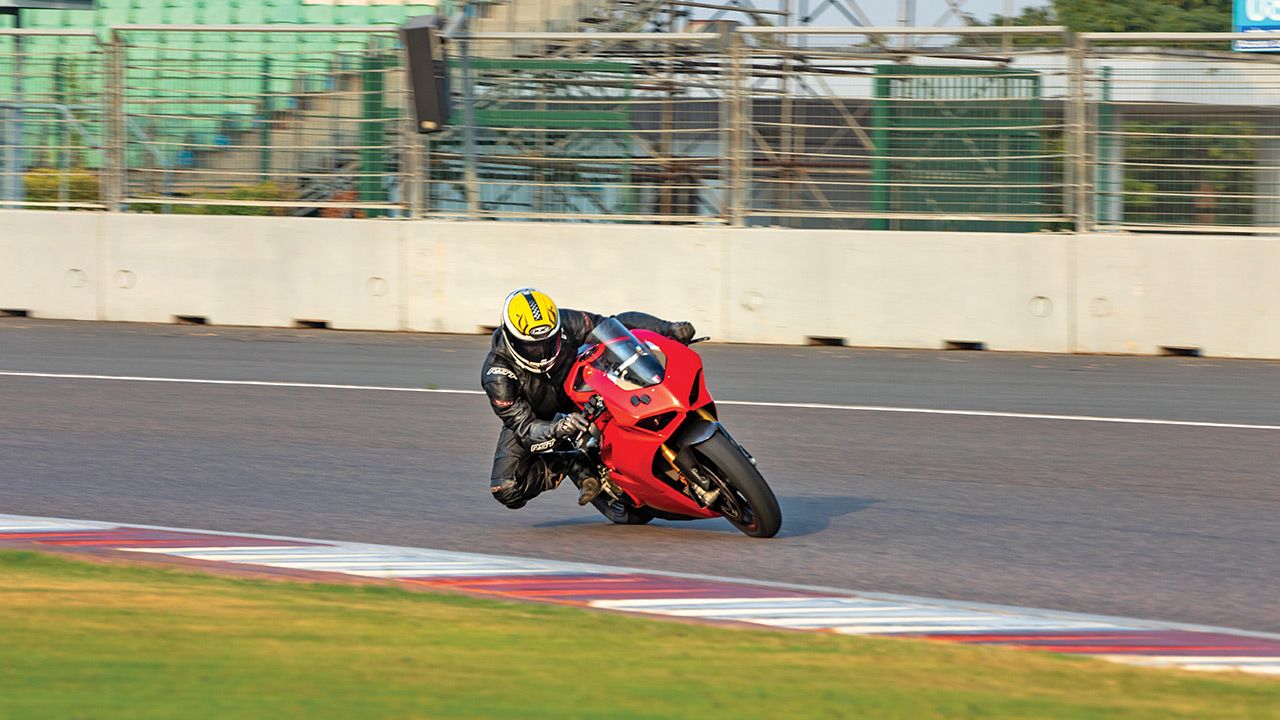
But, on the track, things change dramatically. The V4 doesn’t behave like an old pal right out of the gates. In fact, you need a lot of time to familiarise yourself with it. With 226bhp on tap, the V4 is an absolute nuke and should be treated with the utmost care and respect. Its power delivery is ferocious, and you get ample torque throughout the rev-range – in fact, you can do the whole lap in 3rd gear.
As the tach passes 9,000rpm, it becomes very difficult to hold onto the bars – the sheer acceleration of the thing could tear your arms off, or so it feels. On the short-loop of the BIC, it’s kind of unnerving to find just the right throttle input. No matter what riding mode you select, a slight twist of the throttle viciously propels you forward, and, within a blink of an eye, you’re slapped with g-forces left, right, and centre. By the time you come back to your senses, you realise that you’ve already missed the next braking marker.
Honestly, to get to grips with the V4’s engine performance, you need to concentrate really hard – a momentary lapse in focus, and it goes from being a precision instrument like a surgeon’s scalpel to a loose cannon in no time. Sure, it has a million electronics systems, which work in the background all the time, smoothening things out for you, making it easier for you to ride. However, despite all of this, the V4 is one ferocious beast.
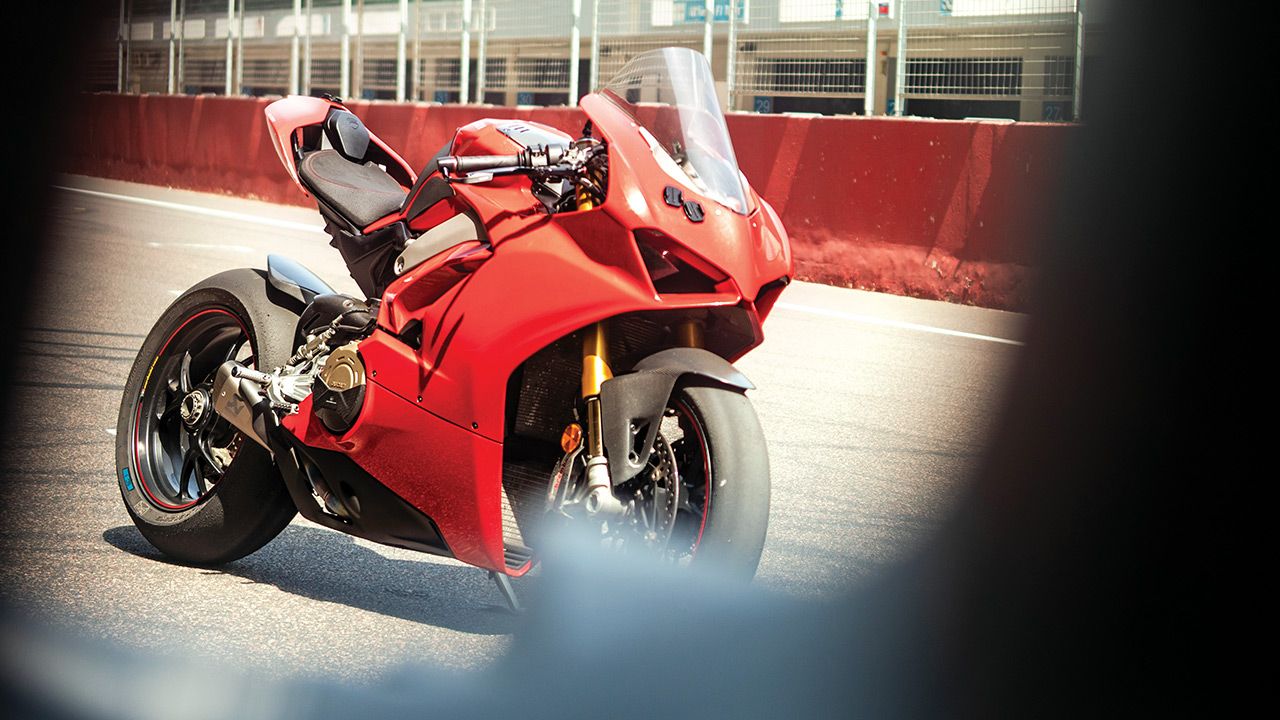
The way the V4’s frame and electronics rein in the firepower is simply brilliant. Make no mistake, the V4 still requires you to muscle it around to get the best out of it, but it never feels cumbersome or unwilling. And, surprisingly, for a litre-class monster, it’s remarkably easy and forgiving. Having said that, you have to be precise in your throttle and steering inputs during side-to-side transitions and while leaning it around late-apex corners, for the V4 requires more effort and skill than a usual superbike. For this reason, it requires you to constantly work hard, and, as a result, fatigue creeps in after only a couple of fast laps. That said, once you get into a rhythm, the V4 is hugely rewarding. I must give special props to its Ohlins electronic suspension (available only with the V4 S), as it seamlessly adjusts the compression and rebound on the move, taking inputs from the throttle, brake and engine sensors.
Since the power delivery of the Panigale V2 isn’t as violent, corner exits tend to be cleaner, and, consequently, you find yourself going faster
The V2, on the other hand, feels roomier and less aggressive – the seat is longer, bars are wider, and pegs aren’t as high as the V4. The best part of the V2 is its confidence-inspiring nature, especially when you try to go fast on it. Unlike the V4, the V2 allows you to immediately get into the groove. In fact, it feels a lot livelier and friendlier to push around corners. The standard Showa BPF front fork, although fully-adjustable, does feel a touch too soft in comparison to the Ohlins, but the V2 leans more easily, feels fluid during quick direction changes and allows you to stick to the racing line more effectively. It lacks the mid-corner stability of the V4 but follows its line in a predictable manner. Since the power delivery isn’t as violent, corner exits tend to be cleaner, and, consequently, you find yourself going faster.

Overall, the V2 definitely feels like the better learning tool of the two. But don’t think it’s easy to tame. The 955cc Superquadro engine has typical V-twin hot-headedness, which becomes quite evident after 6,000rpm, with torque gushing in at a relentless pace. That said, the V2’s 150 odd horses don’t actively try to blow your head off – something that the V4 seems to have a particular proclivity for, with its 200+ horses.
At the same time, the V2 isn’t any less exciting or subdued. With its optional Akrapovic racing exhaust (it costs ₹4.73 lakh extra!), the V2 sounds just as guttural as the V4. In fact, the V2’s exhaust note is so violent that every time you go out for a ride, you feel as if you’re in the midst of a tornado.
On top of all that, the V2 gets all the leading-edge tech of the V4. However, its Brembo M4.32 monobloc brake calliper isn’t as sharp as the V4’s Stylema.
Public Appearance
On public roads, we expected the V2 to be a better bet than the V4, but truth be told that wasn’t necessarily the case. Sure, the V4 feels cramped and racy, but, because of the electronic suspension, its ride quality is marginally better than the V2. The V2, though, is easier to live with, mainly because of its less aggressive riding position and more usable power. You can at least dare to go full-throttle on it once in a while on public roads. Twisting the V4’s throttle fully on public roads is not a great idea though – unless you’re desperate to meet your maker. In fact, this is not just a problem with the V4 – all 200+bhp superbikes are quite pointless to ride anywhere other than a racetrack.
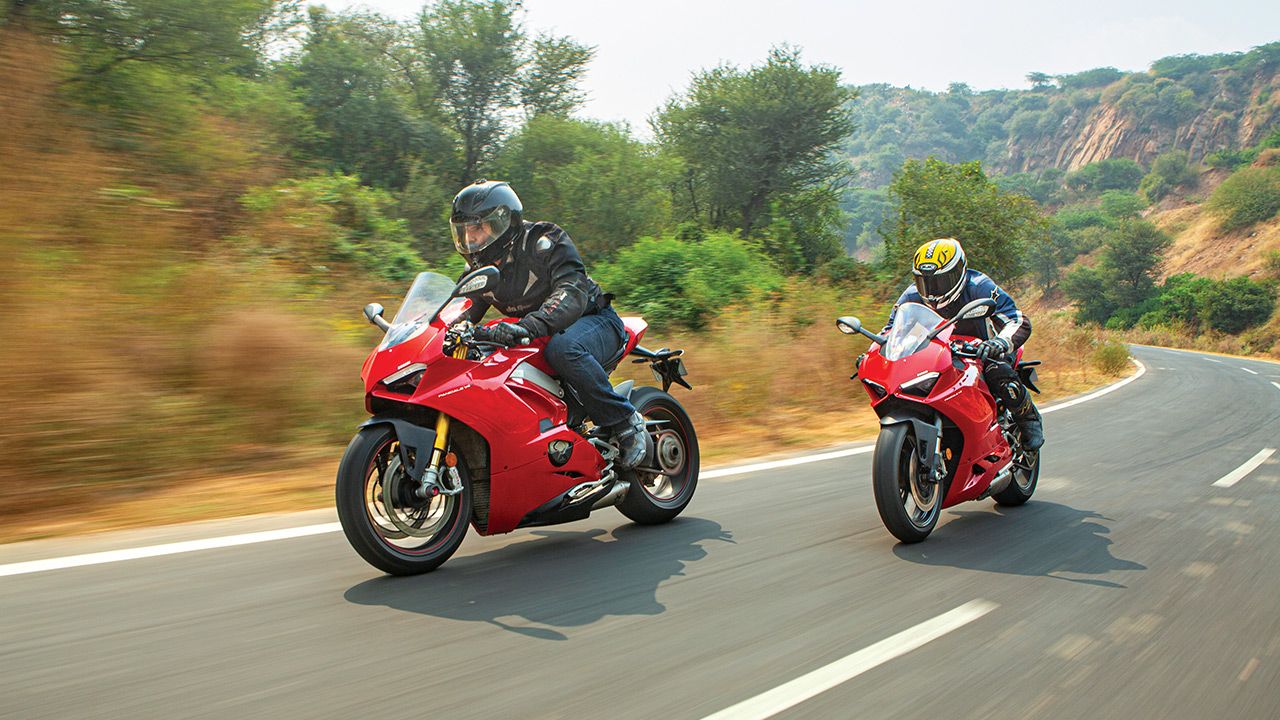
Crunch time
Let’s start with lap times. With the Panigale V4, Simran managed to clock the fastest time of 1:01.9. The Panigale V2 lapped the circuit in 1:03.3 in the same conditions. So, the V2 was slower than the V4. But isn’t that obvious? Not quite. You see, the V4 S we had on the track was in full race-spec, meaning that it was shod with Pirelli SC1 slick tyres. The V2, on the other hand, was fitted with stock rubber – Pirelli Diablo Rosso IIs – and not even the more track-focused Supercorsa SCs. Keeping that in mind, it was a remarkable feat for the baby Panigale. In fact, Simran claimed that, with the V2 shod with slicks, he could have even knocked out the V4’s lap time.
So, how in the world was the V2 so fast? The answer is simple, the V2 feels more natural and intuitive. What it lacks in outright firepower, it makes up for in agility. Of course, for seasoned racers, like Simran, the Panigale V2 doesn’t quite make the cut, as he felt it wasn’t aggressive enough and lacked the racy ergonomics (tank support, high rear-sets, etc.) of the V4. But, then, most people who buy a Panigale will not have Simran’s skillset. And to reach a professional racer’s level, you’ll need a no-compromise and friendly learning tool like the V2, and not a fire-breathing 200bhp top-of-the-range dragon. Even on the road, the V2 is more rewarding – or should I say less frustrating? – to ride, because it’s less hardcore and more manageable.
I can’t believe I’m saying this, but if I were to buy a Panigale today, I’d definitely pick the V2 over the V4. Not only does it make more sense, but it also saves over ₹10 lakh in the process. That said, the Panigale V4 isn’t on sale in India at the moment. The updated version is already out in global markets, but it’ll only come to India once it’s Euro 5 / BS6 compliant – which is expected by early 2021.
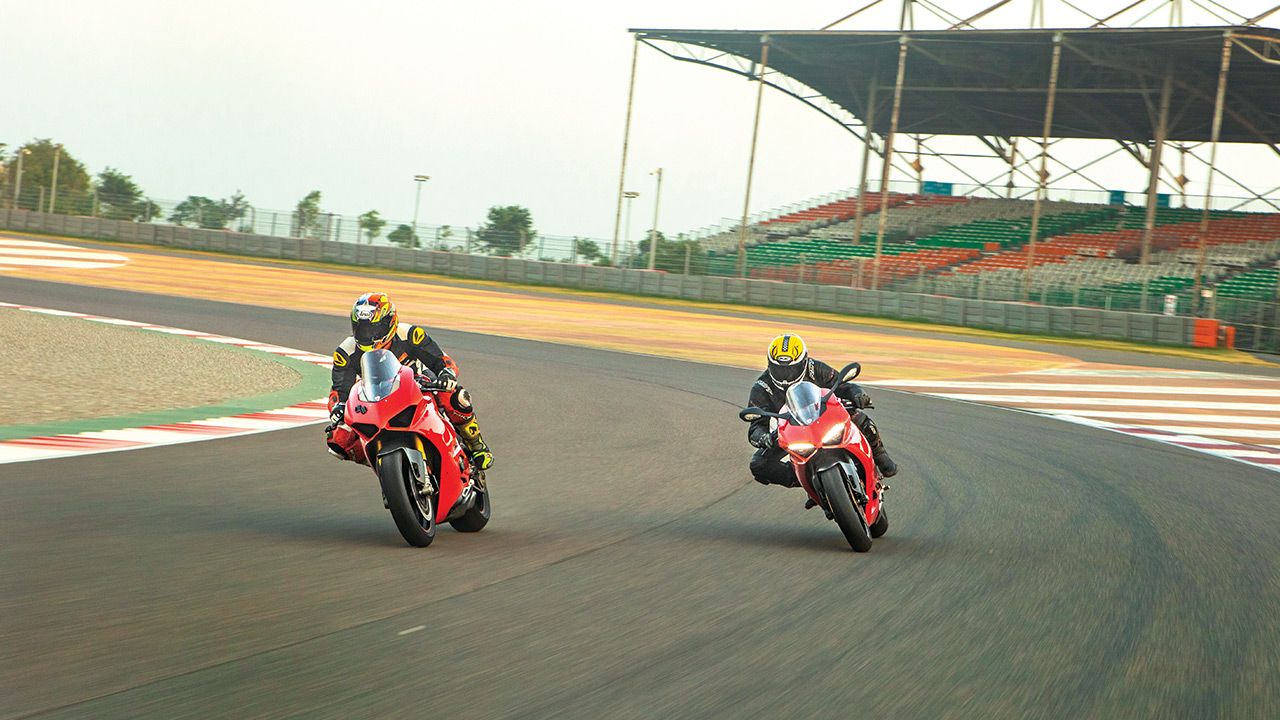
That’s not the end of the story though. As a soul-stirrer, the V4 is still my favourite. You see, just like Marc Marquez, I’ll always be in awe of its balls-to-the-wall approach. However, if I have to learn the art of going fast while also enjoying the process, I’d much prefer the slow-burner approach of Alex Marquez, or, in this case, the Panigale V2.
Also read,
Ducati Panigale V2 India Review: First Ride
Engine: 1,103cc / V4
Power: 211bhp @ 13,500rpm
Torque: 124Nm @ 10,000rpm
Gearbox: 6-Speed
Suspension: Electronically adjustable Ohlins NIX30 (front) & TTX36 (rear)
Electronics: 6-axis IMU, Riding Modes, Traction Control, Quickshifter, Cornering ABS, Wheelie Control, Engine Brake Control, Slide-by-Brake.
Accessories: Akrapovic Racing Exhaust (₹6.03 lakh, +15bhp & 10Nm)
Price: ₹26.50 lakh (Ex-showroom)
X-factor: With its soul-stirring performance, leading-edge tech and breath-taking looks, the V4 is still the top-dog of the Panigale range.
| Pros • Brute power • Electronics • Handling | Cons • Not for amateurs • Too racy |


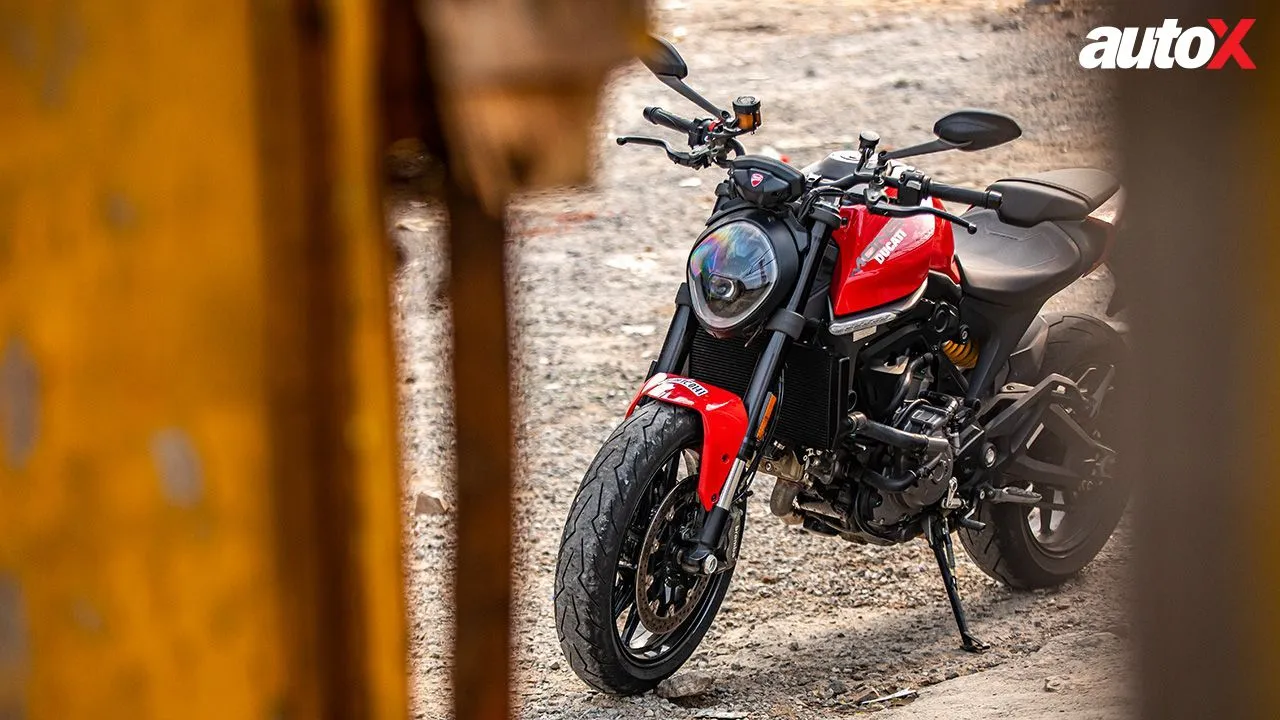
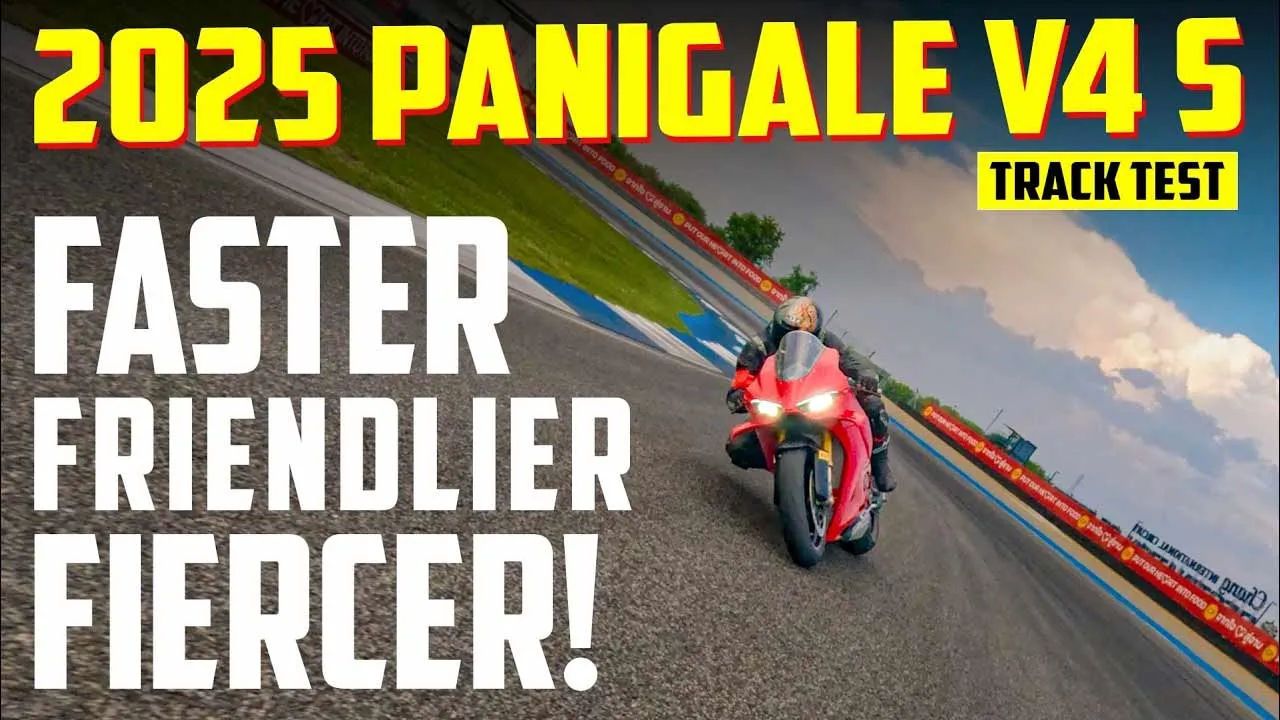
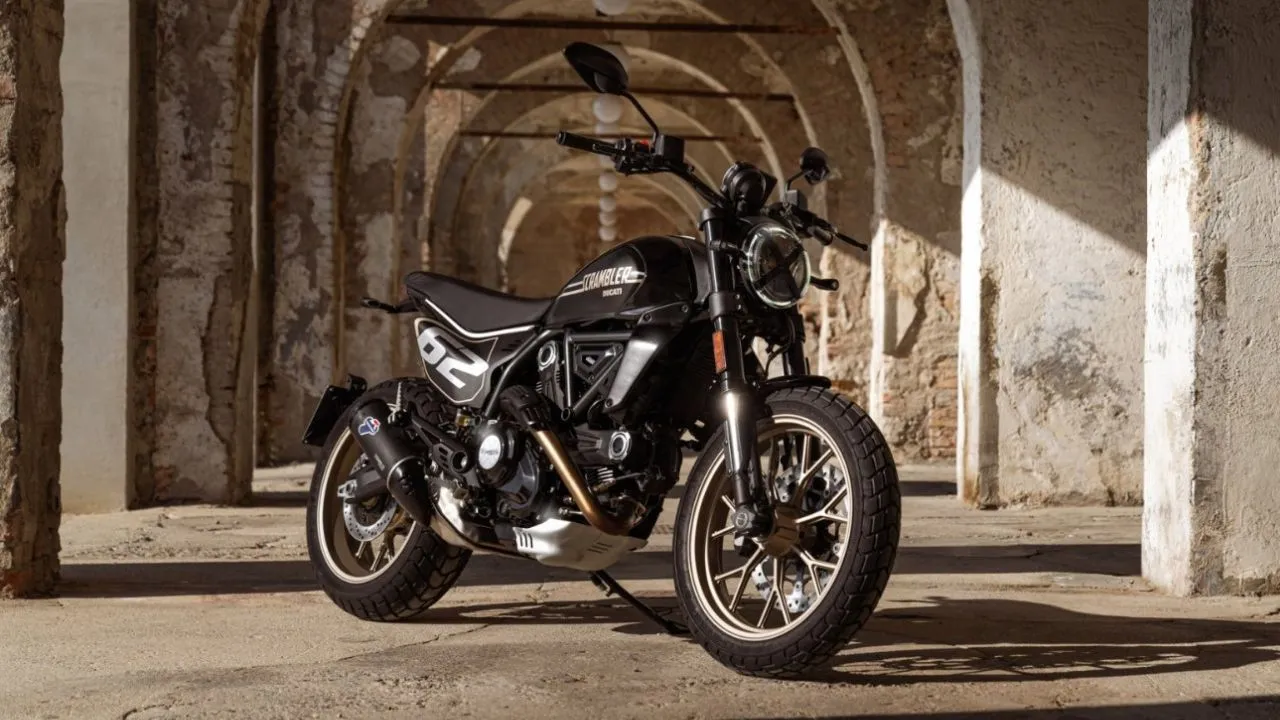
-(1).webp)
-(1).webp)
.webp)
Write your Comment on